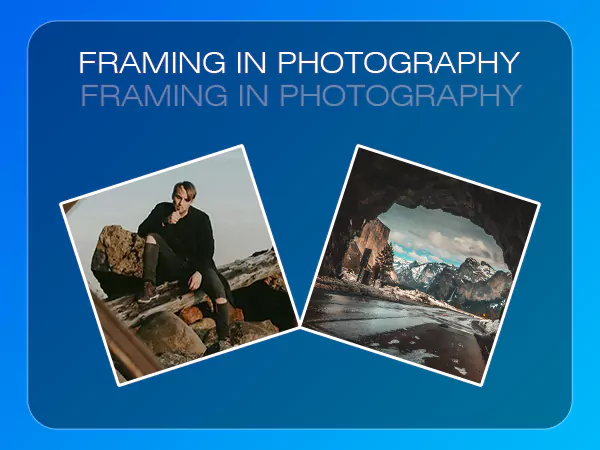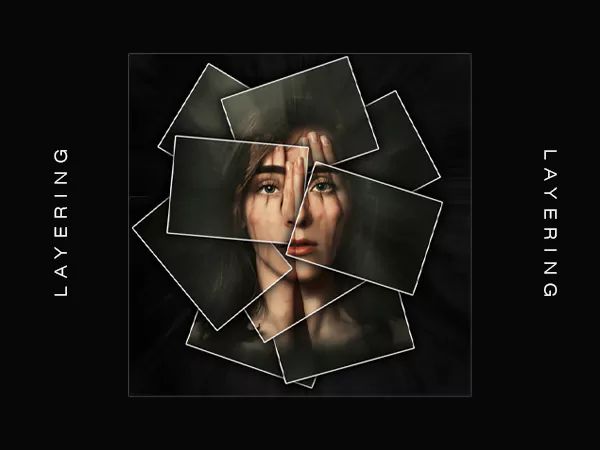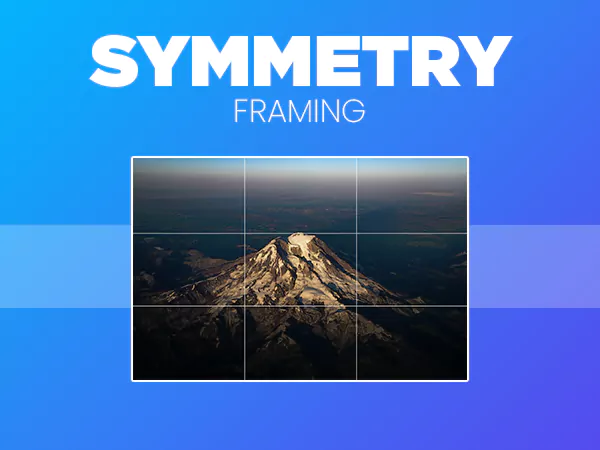Framing in photography refers to the visuals that are captured within the aspect ratio of the camera. Which ultimately creates a border around the captured images.
For a dabbler, the framing in photography might sound like referring to the actual physical frame used to display a photo, but that is not the case.
Photography framing achieves attention to the subject that compels a story and creates depth, allowing the photographers to tap into their vision. It helps turn their vision into reality, allowing them to capture what they truly want.
Acting as a guide for the viewer’s eye that evokes emotions and narrates a story, leading them to focus on the main subject.
Simply framing refers to an effective tool in photography that shapes how your snap image should be felt and viewed.
What is Framing in Photography?
Whether you call it framing or border, the simplest definition is what a photographer wants to capture through the lens. A technique that guides the viewer to focus on the main subject while keeping the borders less distracting.
It could be taking a snapshot of clouds out of a plane window or capturing the rain through a casement. This adds context and emotion to photos, making them more alluring.
What are the Types of Framing?
Mainly, there are two types of framing in photography: the first one is natural, and the other is artificial.
1. Natural
Natural framing involves the use of natural elements that already exist in the environment. The examples are:
- Trees
- Windows
- Arches
- Doorways
- Shadow
- Reflection
Or anything that is not brought up momentarily to capture, but is either observed and captured in natural form. It heavily depends on the photographer’s eye and timing to get those aesthetically exceptional shots.
2. Artificial
On the other hand, this type of framing, the photographer manipulates the environment as per his/her creative vision. It gives more control and allows you to set the composition accordingly.
The artificial props for framing may include:
- Flowers or leaves.
- Curtains, mirrors, foliage, or cutouts.
- Balloons
- Constructed backdrop
- Lightings
Or anything that can easily be placed momentarily to create a frame and get a picture-perfect outcome. Moreover, you can also leverage the positioning of the subject to create depth.
It could be centered, diagonal, rule of thirds, or off-center framing. Once you have clicked the images, you always have an option to crop out unwanted areas to make it more refined.
What is The Importance of Framing in Photography?
Till now, we were discussing how we can implement the framing techniques, but is it worth mastering? The main crux of framing is to capture such shots where the viewer’s attention is drawn towards the subject.
Furthermore, the right usage of framing enhances storytelling and evokes emotions along with:
- Improving composition and making photos stand out.
- Adds depth and creates a sense of scale by creating a visual hierarchy.
- Creates a sense of narrative or expresses a story.
- Makes it easier for the viewer to lead their eyes towards the main subject.
- It can also bring our balance by making photographs look symmetry.
Lastly, a well-framed captured shot feels complete and creates a sync between different elements. However, the concept of framing images is bifurcated into various types. Earlier, we discussed the techniques, but those are further broken down.
How to Use Framing in Photography?

The entire notion of framing heavily relies on aspect ratio, subject, and the framing techniques applied. First and foremost, a photographer must be aware of the surroundings and the nature of the subject.
Whether you want to frame the subject while keeping the spectacular backdrop in attention, or vice versa. Here’s how to make use of framing in photography effectively.
Classifying Subject
Understand the subject and you’ll get the most out of the work done. Whether it’s a human subject or focusing on something mesmerizing like flowers or birds, based on that, it becomes easier for the photographer to define the frame of the photograph.
Composition
Composition and framing somewhat go hand in hand; composition deals with the concept of how elements should be placed. It may include using props and artificial setups to get the desired click.
Experiment
The fundamental of creativity lies in experiments; to get what you want, you should keep trying out different angles and light settings. You can also play with manual settings of the camera, like ISO, lighting, aperture, and depth.
Focusing More on Natural Elements
Natural Elements that are present across the environment, like windows, arches, windows, or doors, can be a great frame. All it takes is your perspective to capture some of the stunning visuals.
Keeping It Simple
While experimenting and trying different stuff, photographers usually neglect the potency of simplicity. Less is more aesthetic, and adding too many elements can create distractions.
Considering the Symmetrical Factor
Symmetry is synonymous with artistic beauty, and choosing the frame that fits the perfect symmetrical element creates soothing visuals. It creates a rhythm, but it doesn’t always have to be perfectly aligned.
Emphasizing Background
While clicking pictures, you have plenty of options and the ability to play with the background. You can either choose a simple sky or go for a dynamic as a forest, each telling a story.
It’s part of the frame narrative that should be chosen consciously. Moreover, once you have understood about different constituents framing in photography and how it should be used, the next step takes us towards mastering the technique.
What are The Best Framing Techniques in Photography
Whether you are printing standard photo size or something big like canvas, these framing techniques are common for every aspect ratio and subject. Without further ado, here are the framing techniques in photography.
1. Layering

Earlier, we talked about composition, and layering is placing the elements or subject in such a manner that creates depth in photographs. For example, focusing on a flower while keeping the bushes in blur gives an idea of depth. Or a person walking through the busy street while adding exposure to the distant building and traffic.
2. Leading Lines

Leading lines and layering a somewhat similar concepts with a thin line of variance. The leading line is a metaphorical concept that leads the viewer towards the main subject. It could be stairs, roadways, rivers, or fences. The best example of this could be a staircase that leads our eyes towards a person standing at the top.
3. Framing With Shapes

This is a widely used technique where a shape is used that creates a frame around the subject in a distinctive manner. It could be anything: a circle, a heart, arches, a doorway, etc.
4. Symmetry Framing

In this framing technique subject is placed at the middle of the frame, which creates a balanced look. It makes visuals more appealing and soothing to the eyes, making it the most popular technique.
5. Reflection Framing

Commonly used in skyscrapers or a lake setup, mainly one that contains a reflective element. It creates a double symmetrical visual with a unique perception.
6. Color Framing

As the name suggests, this form of framing requires colors to act as a visual boundary in a photograph. This makes the subject look pop out, and the best example of it is a model dressed in a monotone color with a graffiti background full of vibrant colors.
7. Asymmetrical Framing

Completely opposite of symmetrical in this subject is kept off center, mainly when the focus is given on the backdrop, like a panoramic view. This can be used to capture a wide angle and give less attention to the subject.
8. Environmental Framing

Using natural elements like trees, rocks, vines, bushes, etc, we capture the subject while keeping them around the frame. This is also known as lifestyle photography, where the subject is blended with the natural surroundings.
9. Negative Space

This style of photography is usually regarded as simple, where the backdrop is a clear white. The attention is totally given to the subject, where the distraction is next to zero.
10. Framing With Lights and Shadows

The shadows and lights create the frame around the subject, and this kind of photography is very popular on social media platforms. It brings the aesthetic with a subtle blend of contrast and emotion.
By playing with angles and reflection of the light source, photographers can create dramatic visuals that appeal viewer’s eyes. These techniques and fluency with the concept of framing not only make the photographs look professional but also create room for art during photo retouching services.
But these are just superficial layers, as you tap more into your creativity while combining the basics of framing in photography, you’ll discover its importance.
Frame Within the Frame
Once you are through with the basics of framing in photography, frame within the frame is a concept that is a bit advanced. It requires you to amalgamate all the existing techniques and draw focus to the subject with various layers of frames.
The examples of external frames could be windows, a hole, arches, tunnels, or anything that acts as a channel to keep a focus on the main subject. It is somewhat similar to the shape technique of framing, but has a stronger emphasis on storytelling and has fewer distracting elements.
It could be capturing a sunset between tree branches, or capturing a person at the end of a hallway. This method gives the viewer depth and dimension by maintaining enclosure.
Final Words
This illustrious guide on framing strolls you through some of the essential tips on how you can enhance your photography portfolio. Whether you are a novice shutterbug or someone looking to add a unique lineup, adopting these techniques and suggestions might be helpful.
That being said, framing is not just a concept of photography but a foundation that upholds the entire definition of art.
FAQs
Q1. What is the default aspect ratio of modern cameras?
Ans: The most modern digital cameras and smartphone cameras have a 3:2 aspect ratio. However, you can modify it to 16:9 or 4:3 1 ratio.
Q2. What is the simplest definition of framing in photography?
Ans: The simplest definition of framing in photography refers to the ability to capture what a photographer truly wants and what to exclude.
Q3. What is composition in a photo?
Ans: Composition is the arrangement of visual elements in a manner that brings aesthetics and creates a compelling story. Elements like symmetry, leading lines, and the rule of thirds are implied for an alluring outcome.
Q4. What is an ideal print size for a photograph?
Ans: 4×6 and 4×8 are the ideal sizes for photography prints if you want to keep them in your album. For wall size photo frame, 8×10 or 16×20 is recommended.
Sources:
Framing in Photography – Adobe









